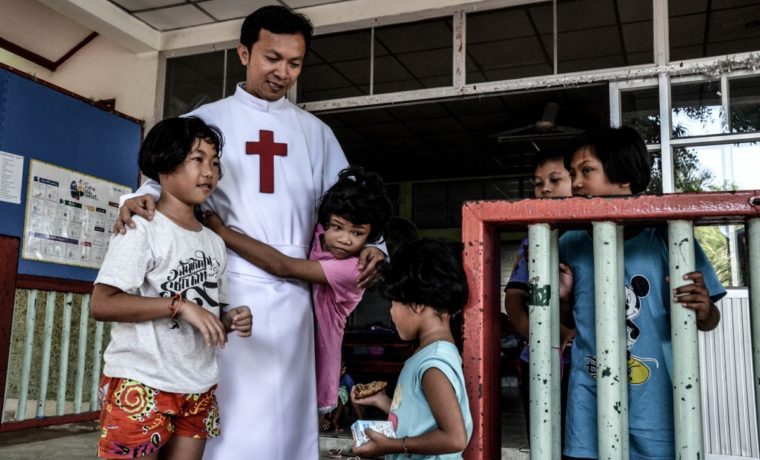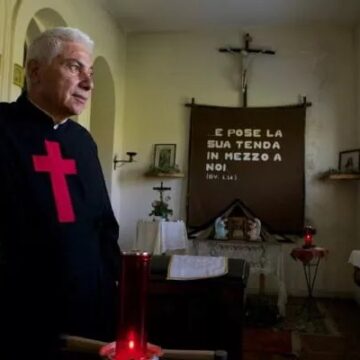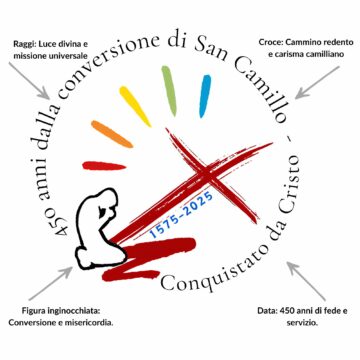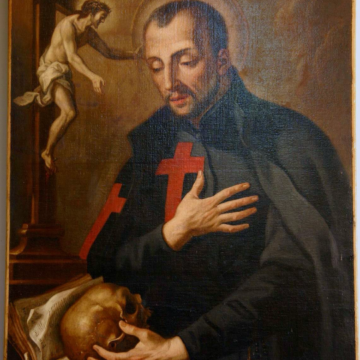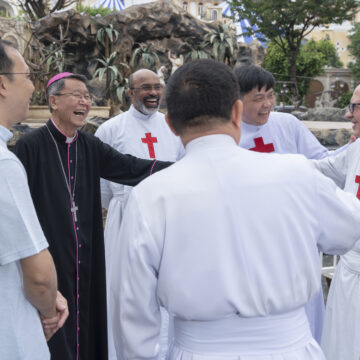(From Rayong, Thailandi) – Father Giovanni Contarin of the Order of Camillians, who at the present time runs a home for elderly people in Korat in the north of Thailand, in 1996 opened in Rayong the first centre for people with HIV-AIDS in the country. Some time previously he had tried to do this near to Bangkok but the experience finished in the worst of ways. Initially threats, then the explosion of a bomb right in front of the building. The aim was to intimidate: “you are not welcome here”. The reasons were rooted in Thai culture which in large measure saw the virus as a sort of punishment inflicted on an individual for his or her dissolute conduct in his or her previous life. For this reason, HIV-positive people were often abandoned and rejected by the healthy part of the population. But this Italian missionary had determination. He did not give up and decided to open the centre two hundred kilometres to the south, in an area with a high percentage of people infected with HIV, classified amongst the first five with the disease of Thailand.
“They accompanied them to death with sensitivity”
Until a few years ago in Thailand there was no escape for people with HIV. To contract the HIV virus was the same as receiving a death sentence. The fate of these sick people, men, women 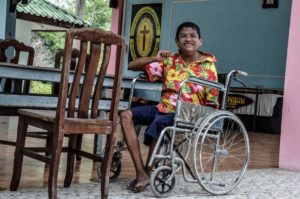 and children, was sealed. To die was the only epilogue possible. And Giovanni Contarin could do nothing else but accompany these suffering people until their last breath. The beginning of his activity at their side, in fact, involved making their deaths dignified ones, holding each one of them by the hand, with compassion and sensitivity. He did this for ten long years. “At that time it was almost impossible to obtain anti-retroviral treatment”, Father Chaisak Thaisonthi, the current Director of the Camillian Social Center, explained to me. “Treatment existed, but it was too expensive”. Fortunately, today the situation has changed a great deal. “Since 2006’, this religious went on, “the Thai government has assured the provision of medical products free of charge. In this way all patients who are HIV-positive have an opportunity to be treated and improve their quality of life”. As a consequence, the purpose of the centre has changed: “Now we help the patients to regain their strength and go back into society”.
and children, was sealed. To die was the only epilogue possible. And Giovanni Contarin could do nothing else but accompany these suffering people until their last breath. The beginning of his activity at their side, in fact, involved making their deaths dignified ones, holding each one of them by the hand, with compassion and sensitivity. He did this for ten long years. “At that time it was almost impossible to obtain anti-retroviral treatment”, Father Chaisak Thaisonthi, the current Director of the Camillian Social Center, explained to me. “Treatment existed, but it was too expensive”. Fortunately, today the situation has changed a great deal. “Since 2006’, this religious went on, “the Thai government has assured the provision of medical products free of charge. In this way all patients who are HIV-positive have an opportunity to be treated and improve their quality of life”. As a consequence, the purpose of the centre has changed: “Now we help the patients to regain their strength and go back into society”.
The naturalness and the innocence of the little ones
This centre of the Camillians , which since 1996 up to the present time has helped almost two thousand individuals, amongst whom 200 minors, now has 75 adults and 4 children. “All those inside it have HIV-AIDS and have been abandoned or become orphans”, I am told by Marco Palestrini, an Italian volunteer who, since coming to Thailand fifteen years ago, has dealt with fund raising. “Before the opening of this centre, these sick people did not even have a place to live. Here, instead, they have a safe home, food and above all else an opportunity to improve their state of health and then carry on with their lives in society”. Marco accompanies me outside the building where the smallest children play. The children look at me full of curiosity. Their naturalness and their innocence leave me speechless. Until I become more aware of where I am, a place of pain and illness. Then, however, walking forward a few dozen steps I come to the part of the centre which has the most difficult cases, such as people who have gone blind or have grave disabilities at the level of movement.
The story of Jimmy and his ‘miracle’
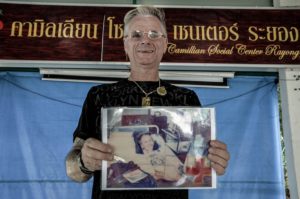 “Some of the people who work for the centre”, continues this Italian volunteer as we continue on our walk round in the offices, “were previously our patients”. One of these is Jürgen Francis, nicknamed Jimmy, a sixty-two-year old German saved by this Camillian centre seven years ago. His story is incredible. He was a professional porter in Scotland and then a dancer. He then went to Thailand in pursuit of a woman whom he had met in Germany only then to discover that he had AIDS. He is dressed in black, with a very visible cross hanging from a necklace above his short-sleeved shirt and another cross hanging from an earring in his right ear. He has a smile imprinted on his face, very many tattoos on his body, and the unfailing can of coca cola in his hand. I meet him in front of his room where he tells me his story.
“Some of the people who work for the centre”, continues this Italian volunteer as we continue on our walk round in the offices, “were previously our patients”. One of these is Jürgen Francis, nicknamed Jimmy, a sixty-two-year old German saved by this Camillian centre seven years ago. His story is incredible. He was a professional porter in Scotland and then a dancer. He then went to Thailand in pursuit of a woman whom he had met in Germany only then to discover that he had AIDS. He is dressed in black, with a very visible cross hanging from a necklace above his short-sleeved shirt and another cross hanging from an earring in his right ear. He has a smile imprinted on his face, very many tattoos on his body, and the unfailing can of coca cola in his hand. I meet him in front of his room where he tells me his story.
“I was waiting for death in a hospital in Bangkok after a sudden malady revealed my real state of health to me. I could not believe it; I did not want to believe it. But the results of the analysis were clear. I had been HIV-positive for twelve years without knowing it”. He seemed to have no other option than to die. But Jimmy did not want to be in a hospital and for this reason he asked for help. Thanks to a number of contacts that he had, on 8 November 2011 an ambulance accompanied him to the Camillian Social Center of Rayong where he was convinced he would spent the last days of his life in peace. “It was precisely here that my treatment began and I gradually got back to being able to walk. As soon as I got better I decided to dedicate my existence to the people in the centre”, he told me as he showed me what condition he was in when he arrived. Jimmy is certain that his case was an authentic miracle worked by God and for this reason, wherever he goes, he tells me, “I will spend my whole life here helping other people”.
More than five million cases in Asia
“At the present tome the number of HIV-positive people in Thailand who are still alive is about 420,000, in a population of 67 million”, says Father Thaisonthi while he shows me the up-to-date data that are available to him. Since the beginning of the epidemic in 1982, this disease has caused 35 million deaths in the world. According to the numbers released by the ‘Statistical Update on Children and Aids 2017’ of UNICEF, in the year 2016 alone 120,000 children under the age of fourteen died because of causes linked to this disease and every hour eighteen minors are struck by HIV. These are striking figures as a result of which, despite the fall in new diagnoses of this disease registered over recent years, we cannot lower our guard. The virus, in fact, continues to strike and circulate, above all amongst the poor and the desperate of the South of the world. In Africa there are about 25 million people with this disease. In the whole of Asia there are more than five million registered cases and in Latin America we reach the figure of two million.



